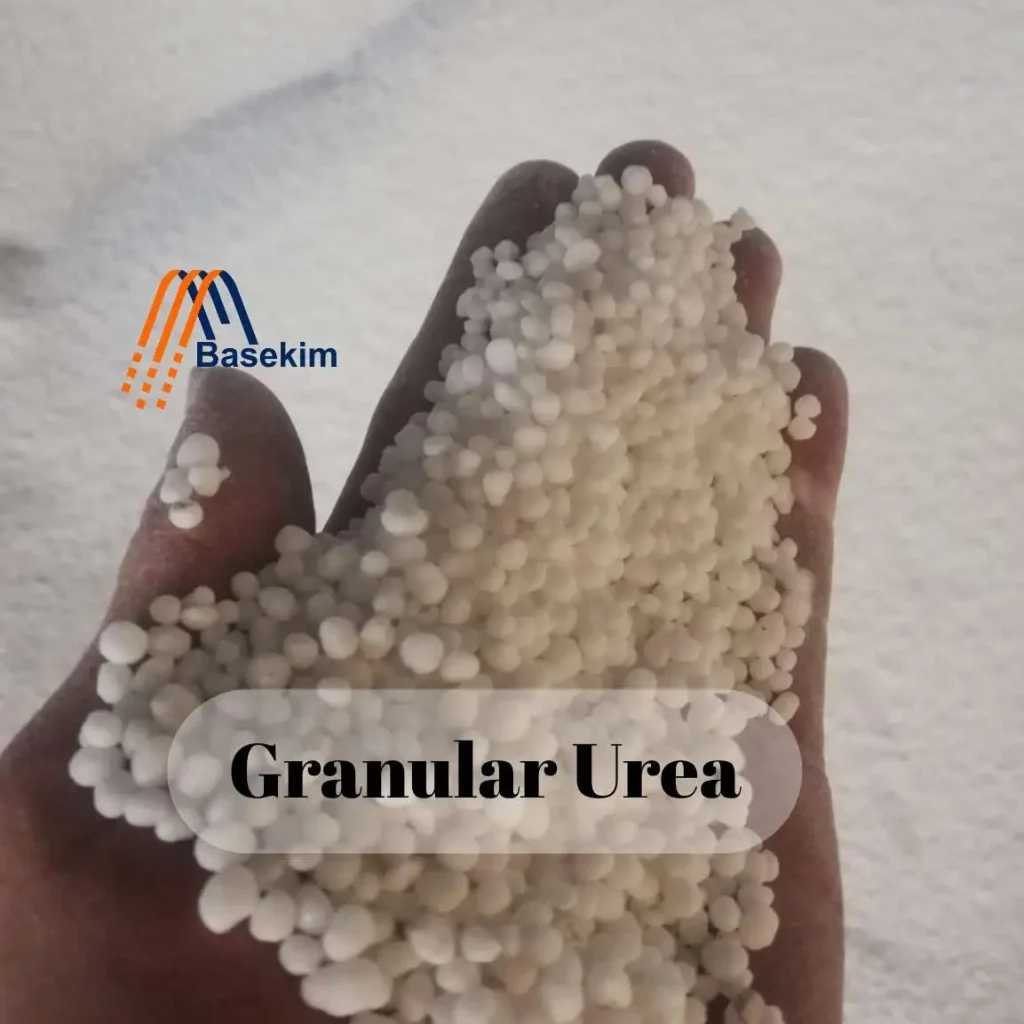
Granular Urea 46% N is one of the most important fertilizers in global agriculture. Farmers, distributors, and traders all rely on it because of its high nitrogen concentration, cost-effectiveness, and flexibility in application. This nitrogen fertilizer plays a central role in boosting yields for staple crops such as rice, wheat, and corn. With its 46% nitrogen content, urea stands as the most concentrated solid fertilizer available on the market today.
Table of Contents
ToggleManufacturers produce this fertilizer by combining ammonia with carbon dioxide under controlled conditions. The process creates hard, round granules between 2 and 4 millimeters in size. These granules dissolve easily in water, making the product effective for different types of soils and climates. The “46% N” indicates that almost half of the product consists of nitrogen, which means farmers can apply less material while still meeting their crop’s nutritional needs.
When buyers request granular urea, they usually expect specific quality standards:
Nitrogen content: minimum 46%
Biuret: maximum 1.5%
Moisture: maximum 1%
Granule size: 2–4 mm, uniform distribution
Solubility: fully water soluble
International buyers often ask for SGS inspection or certificates of analysis to confirm these parameters before finalizing a contract.
This form of nitrogen fertilizer offers several clear benefits:
High efficiency: crops receive more nitrogen per unit of fertilizer.
Strong granules: they resist breaking during transport and storage.
Stability: larger granules handle humidity better than prilled urea.
Lower cost per unit of nitrogen compared to other fertilizers.
Wide global production ensures consistent supply in large volumes.
Because of these strengths, both farmers and bulk distributors continue to prioritize granular urea over competing products.
Farmers apply urea fertilizer to nearly every major crop. They spread it directly on the soil for cereals, fruits, vegetables, and industrial crops like cotton or sugarcane. Many also use it in blends such as NPK formulations to provide balanced nutrition. Granular urea supports rapid plant growth, greener leaves, and higher yields, which makes it indispensable in modern farming.
Although agriculture absorbs the majority of demand, industries also depend on urea. Manufacturers use it in resins, adhesives, plastics, and chemicals. Another important use appears in the automotive sector, where producers convert urea into Diesel Exhaust Fluid (DEF) or AdBlue. This solution helps reduce harmful emissions from diesel engines and supports compliance with environmental regulations.
Warehouse managers must store urea in dry and well-ventilated areas. If exposed to moisture, the product cakes and becomes difficult to spread evenly. Farmers should avoid mixing urea with ammonium nitrate or phosphates during storage, since these chemicals can react. Workers handling bulk quantities usually wear gloves and goggles for safety. When stored properly, urea maintains its quality for at least one year without losing nitrogen content.
Suppliers offer different packaging sizes based on customer needs. Standard packaging includes 50 kg polypropylene bags, 500–1000 kg jumbo bags, and bulk shipments loaded directly into vessels. International trade usually takes place under Incoterms such as FOB, CFR, or CIF. Buyers frequently require independent inspection before loading. Basekim supplies granular urea 46% to global buyers, ensuring consistent quality and reliable shipping schedules.
The urea fertilizer market remains one of the largest segments of global trade in chemicals. Buyers often ask similar questions before confirming an order:
What nitrogen concentration and biuret level does this shipment have?
Which packaging sizes are available?
How resistant is the product to humidity during transport?
Can the supplier provide SGS or third-party certification?
What are the delivery options under CIF or FOB terms?
Which payment methods are acceptable, including letters of credit?
By addressing these points, suppliers build trust and secure long-term contracts with agricultural companies, distributors, and government procurement agencies.
Granular urea has larger, harder granules that resist breakage and are better suited for humid climates and long storage. Prilled urea has smaller particles, dissolves faster, and is often used where quick nitrogen release is needed.
It can be spread directly on the soil surface. However, to minimize nitrogen loss through volatilization, it is best to incorporate the urea into the soil or irrigate immediately after application.
It is not recommended at high concentrations because it may damage leaves. When used as a foliar spray, it must be heavily diluted.
Granular urea is available in 50 kg bags, 500–1000 kg jumbo bags, and bulk shipments for large-volume buyers.
Quality is determined by nitrogen percentage (46% minimum), low biuret content, low moisture, and uniform granule size. Buyers often request SGS or third-party laboratory testing before shipment.
When stored in a dry and ventilated environment, urea maintains its quality for more than twelve months without losing nitrogen content.
Material Safety Data Sheet (MSDS) PDF file for Granular Urea 46, including detailed safety, handling, storage, and transport information
Access the full technical data sheet of Granular Urea 46, providing specifications, chemical properties, and application details